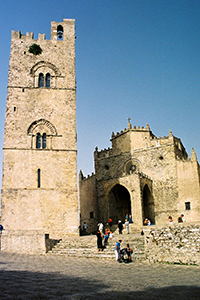Speaker
Description
ISOLPHARM-Ag is a branch of the SPES project (Selective Production of Exotic Species) aimed at the production of carrier free 111Ag for nuclear medicine application at INFN-LNL (Istituto Nazionale di Fisica Nucleare - Laboratori Nazionali di Legnaro). [1, 2]
Among all the radionuclides that will be produced by the future ISOL facility (Isotope Separation On Line), 111Ag is regarded as a very promising radionuclide for cancer therapy, thanks to its decay properties: it is a β─ emitter with a medium half-life (7.45 days), a convenient energy (360 keV) and medium tissue penetration. The decay of 111Ag also produces low energy γ rays (245 (1.24%) and 342 (6.7%) keV), which allow simultaneous therapy and in vivo monitoring of the delivered dose via SPECT. [3]
The application of 111Ag in radiopharmaceuticals is possible through the coordination of the radioisotope to a bifunctional chelator (BFC) conjugated to a targeting molecule that selectively binds over-expressed receptors on tumor cells. The choice of the BFC is a fundamental part of the design of target-specific radiopharmaceuticals since the chelator must guarantee high thermodynamic stability and kinetic inertia in physiological conditions to avoid the radioisotope release in vivo. The development of novel BFC for Ag (I) is demanding and very challenging because the aforementioned requirements for BFC are still an unsatisfied need in the case of silver.
In the present work, tetraazacyclododecane scaffolds with sulfur donating arms were designed and synthesized as novel possible BFCs for Ag(I). [4] Furthermore, their acid-base properties were investigated as well as their coordination chemistry in aqueous solution by potentiometric and spectroscopic techniques to obtain a prediction of the in vivo behaviour of the metal-ligand systems. The obtained high thermodynamic stability makes these ligands promising chelating agents for the future development of silver-based radiopharmaceuticals.
REFERENCES:
1. Borgna et al. Appl. Radiat. Isot. 2017; 127: 214–226.
2. Borgna et al. Molecules; 2018, 23, 2437.
3. Mastren et al. Analytica Chimica Acta; 2018, 998: 75-82.
4. Maecke et al., Angew Chem.; 1997, 36, 24: 2786-2787.




